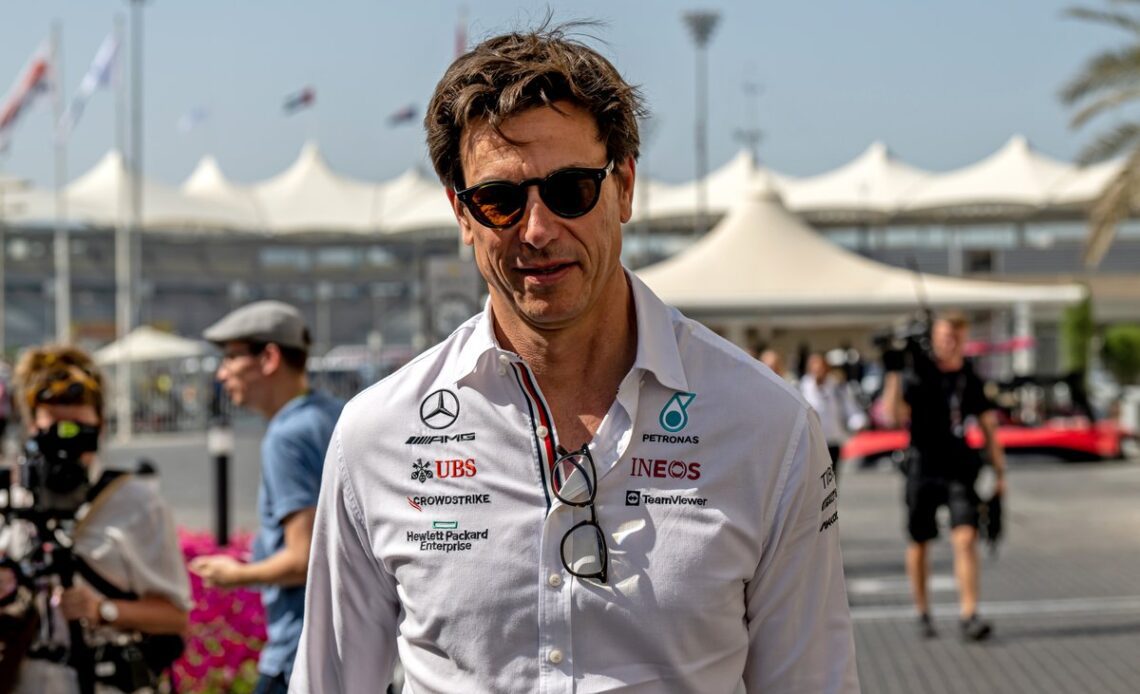After winning eight consecutive constructors’ championships, Mercedes endured a difficult first year under the revised technical regulations in 2022, initially struggling to challenge leading teams Red Bull and Ferrari.
Porpoising proved to be one of Mercedes’ biggest weaknesses in the early part of the year, hindering the form of both Lewis Hamilton and George Russell, before further issues came to light once the bouncing had been resolved.
PLUS: Why Mercedes thinks it can make the step F1 needs to stop Red Bull
Although Mercedes was able to develop the W13 and eventually score its first win of the year at the penultimate race in Brazil courtesy of Russell, the team finished the season third in the standings.
Hamilton said in Abu Dhabi that he was looking forward to the last time he had to drive the car, but Wolff noted the potential future significance of the W13, even if it did not offer largely fond memories through 2022.
“I think this car will always have a special place in our collection – very far back,” said Wolff.
“But I think that hopefully the next few years will do her justice, because the learning curve with that car was enormous.
“Our fundamental understanding of aerodynamic, vehicle dynamics correlation, has really had a step change, has gone through a step change of learning.
“And it will also not be forgotten as a car that dominated the Brazilian Grand Prix!”
Toto Wolff, Team Principal and CEO, Mercedes AMG
Photo by: Michael Potts / Motorsport Images
Mercedes managed to take a big step forward in performance late in the season, aided by a development package that arrived for the United States Grand Prix in Austin.
The team initially thought it had made a breakthrough in Spain, when it appeared to have curbed its porpoising problem, only for further issues to emerge that have prompted a change in approach to the car’s DNA for next year.
“I think we much better understand what the problems were,” reflected Wolff.
“We’ve been peeling onion layer after onion layer off, discovering more issues and more problems. But I think we’ve come to a point that we understand pretty well why the car is not performing.
“As I said before, the correlation is there for some tracks. So it’s all in the fine detail of how can we make the car work aerodynamically, how can we improve the ride, and make it more stable as a basis.
“It’s multiple factors that contribute to a car that is simply just not…
Click Here to Read the Full Original Article at Autosport.com – Formula 1 – Stories…

